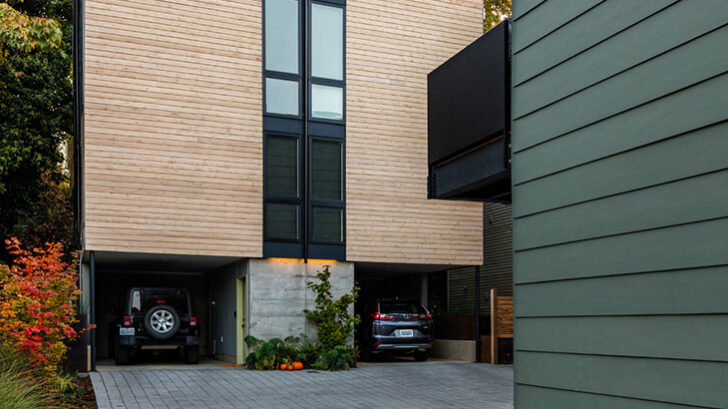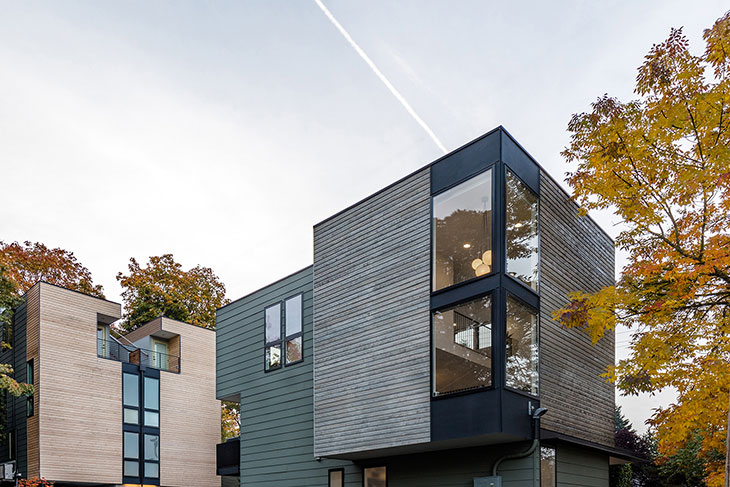
Seattle’s housing market has seen a surge in high-volume, low-quality market-rate housing due to skyrocketing construction costs. In 2018, the city’s construction expenses ranked among the highest globally, averaging $280 per square foot. This economic strain has led to the development of housing that lacks character, resulting in neighborhoods filled with hermetically sealed, faux-modern boxes constructed from low-cost materials and disconnected from the outdoors.
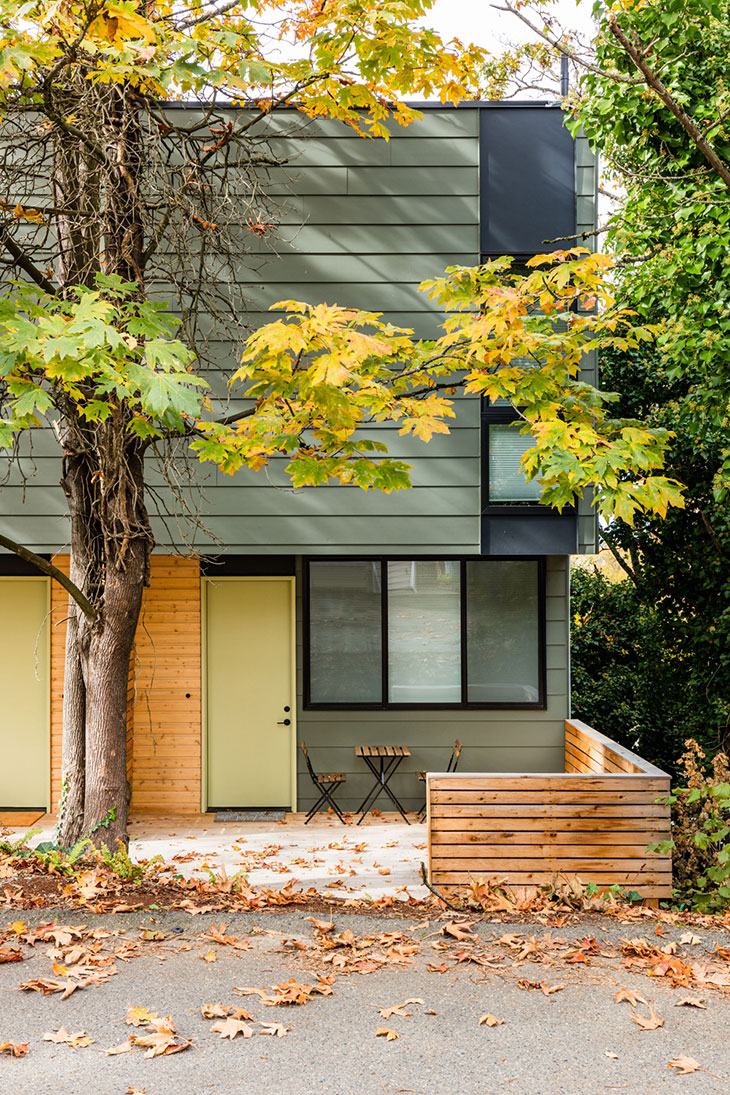
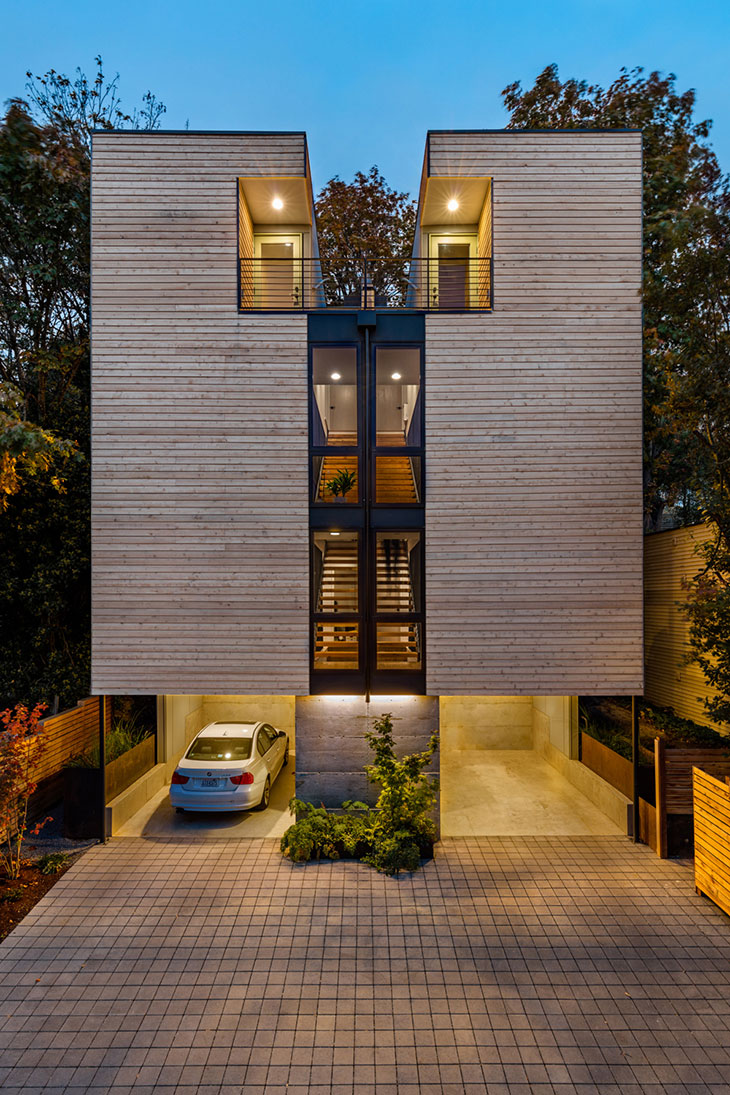
The relationship between architects and developers has traditionally been fraught with tension. Architects often worry that developers strip buildings of creativity and soul, while developers are frustrated by architects’ costly and time-consuming designs, which can drive up construction expenses. “We wanted to change the paradigm,” says architect Matt Wittman. “Our goal was to demonstrate that great architecture and profitable development can coexist.” The Tsuga Townhomes project aimed to resolve this conflict by achieving outstanding sustainable design while maintaining balanced construction costs.
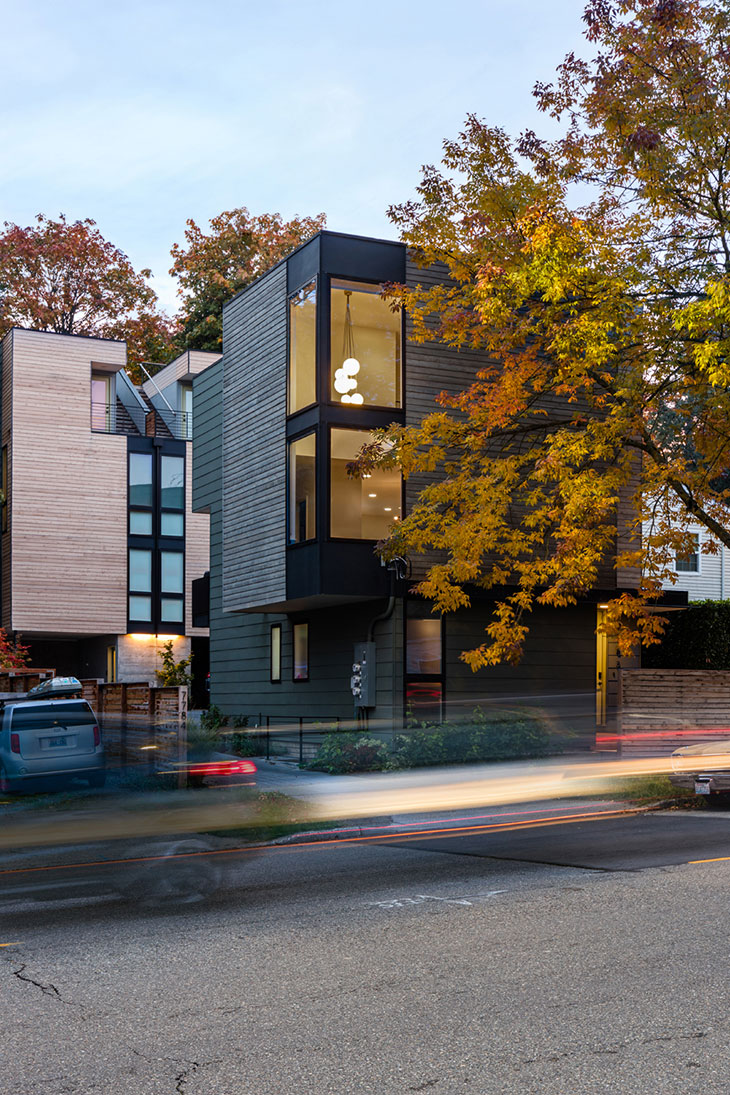
The three-unit urban infill project was completed at a cost of $185 per square foot, a 45% reduction from the Seattle average, while raising the bar for design and sustainability. To overcome the challenges of building on a steep slope designated as an environmentally critical area, Wittman Estes used innovative design to maneuver complicated development restrictions. By researching archival records, the architects determined the slope was artificially created, which opened up an exemption allowing the duplex to be built on the steep slope. “Our real estate agent and contractor colleagues suggested that building on the steep slope would be difficult and costly,” Wittman explains. “We ignored their advice and, through careful handling of the slopes, were able to step the foundations without costly shoring and special engineering requirements.”
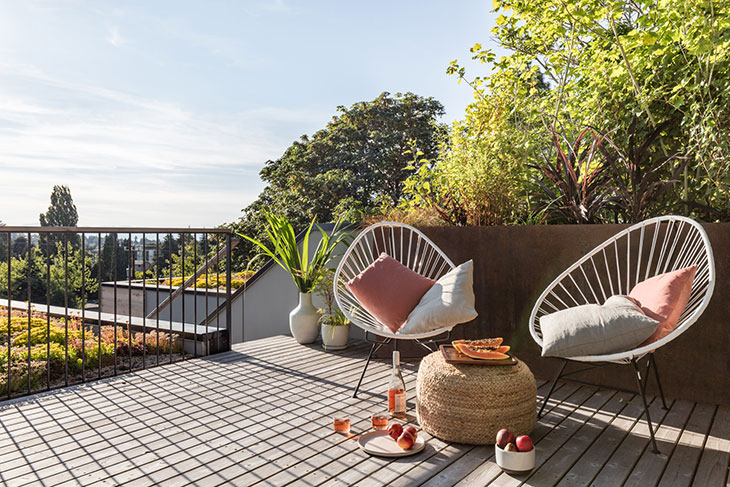
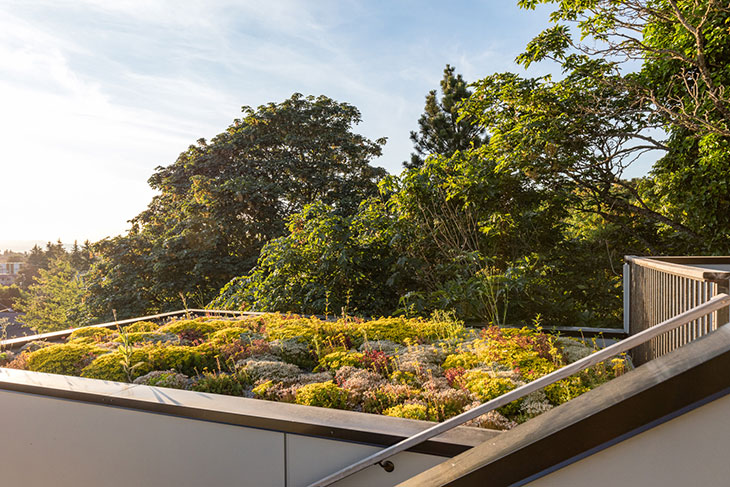
Located at the edge of Seattle’s Highland Park neighborhood, overlooking the Duwamish River, the Tsuga Townhomes project includes a main house and a duplex. The main house sits along the busy arterial of Highland Park Way, while the duplex is nestled into the hillside and wooded greenbelt along 8th Ave. Both buildings are well connected to their surroundings, with strategically placed windows focusing views between adjacent buildings and toward trees and nature. The site plan was composed by carefully arranging outdoor living spaces, green roofs, and large south-facing windows to provide sunlight, glimpses of nature, and access to decks and terraces.
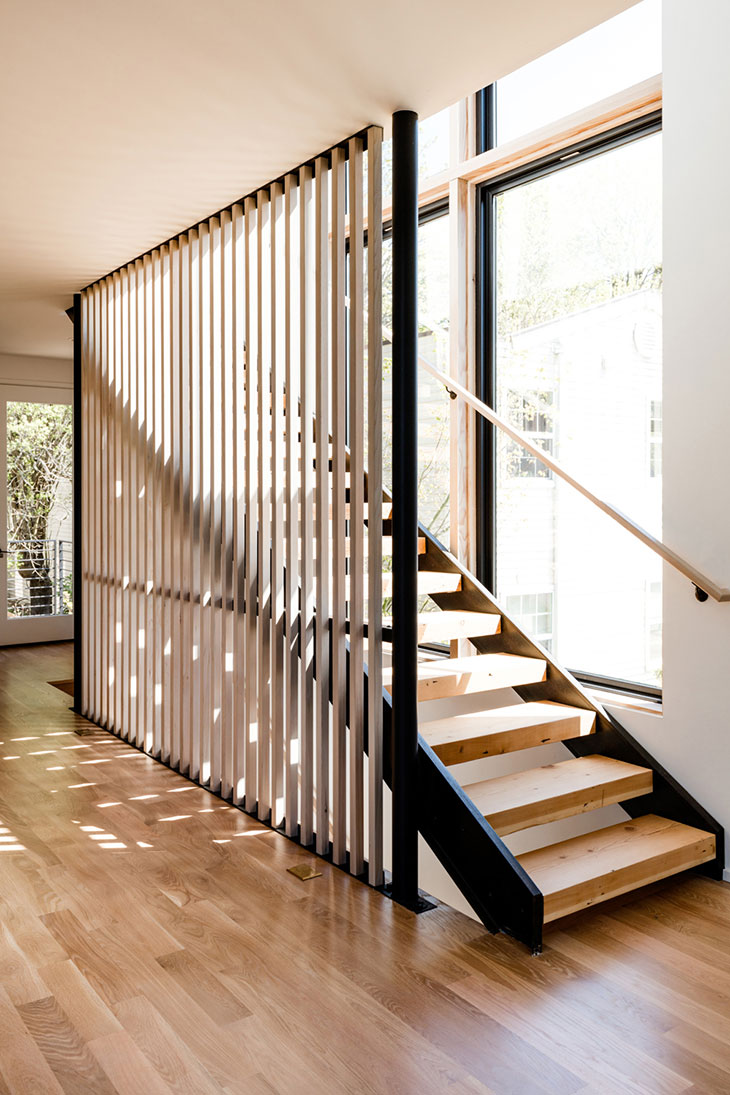
To achieve their design goals, Wittman Estes purchased the land and developed the project themselves. Acting as architect, developer, and contractor, the architects worked directly with fabricators and tradespeople, creating efficiencies and opportunities for more custom and higher quality design details at a lower price. “We saw more creative possibilities by linking architecture with development,” said Wittman. The units sold after only a week, at above the asking price, proving that good architecture is also good for the bottom line.
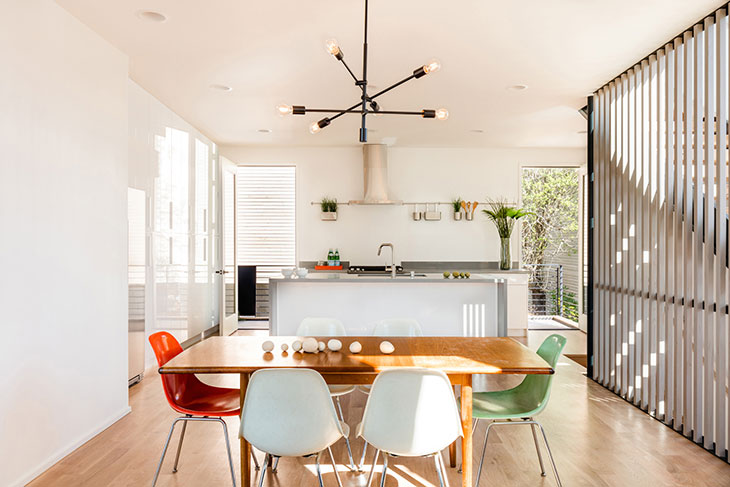
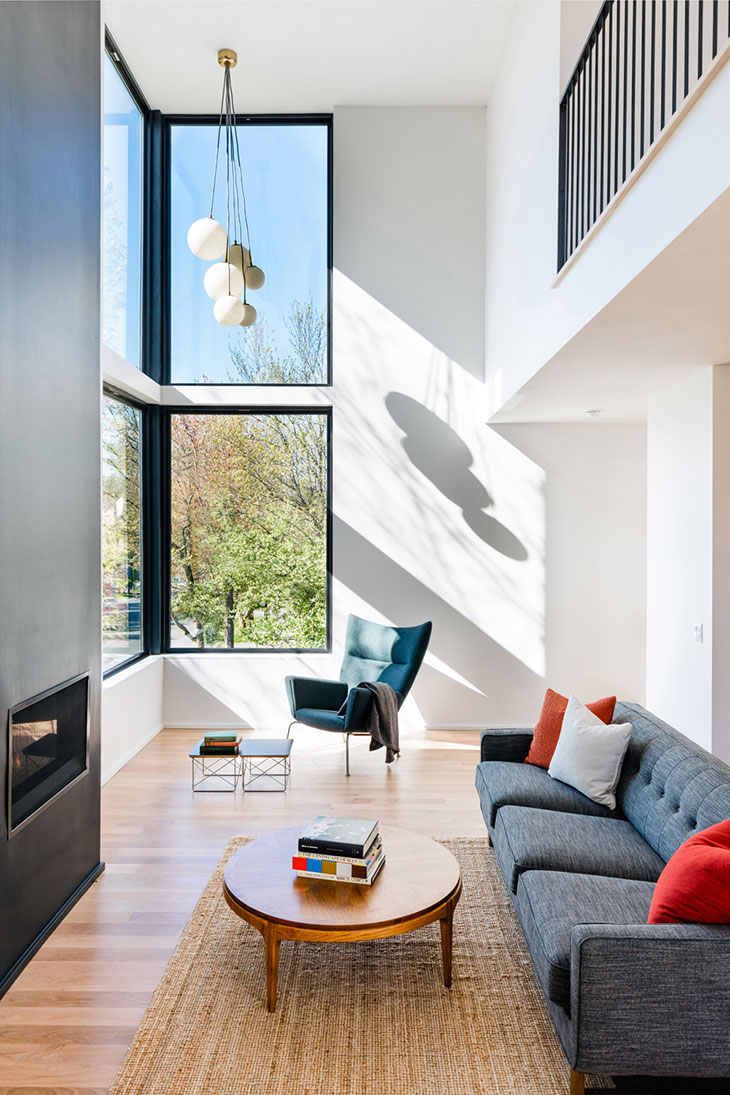
Sustainability strategies were integral to the design goal of creating a healthy living environment that reduces energy use and costs. The site plan includes green roofs and bioretention planters to capture rainwater and reduce runoff. Energy-efficient mechanical systems, insulation beyond code requirements, and Four Star Built Green certification were achieved. The south-facing ‘megawindow’ maximizes solar load, which is useful in Seattle for reducing heating costs. Other strategies, such as highly insulated roofs and floors, air source heat pumps, and eco-friendly finish materials, reinforce the focus on energy efficiency and sustainability.
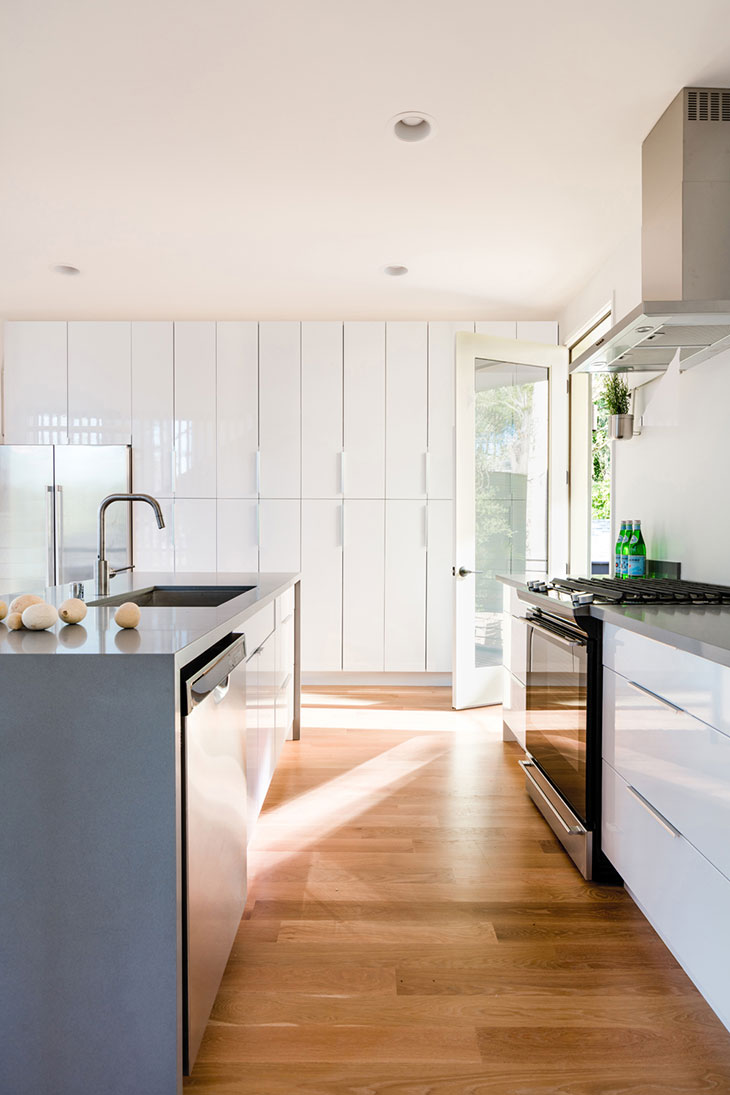
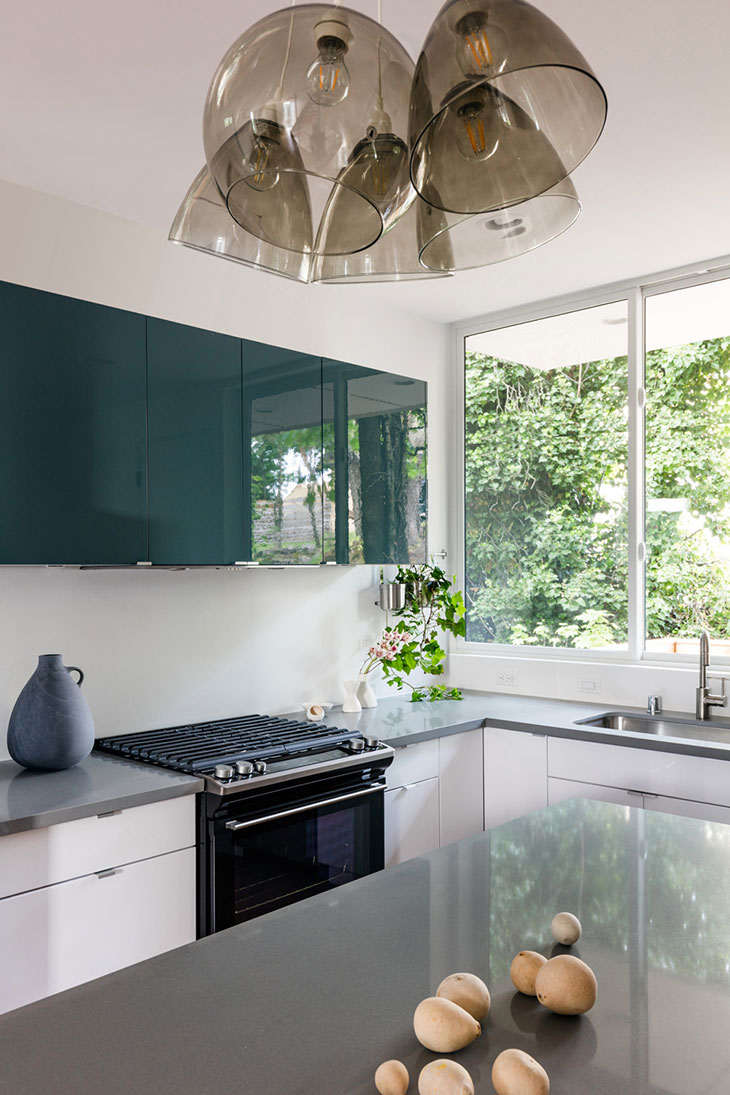
Seattle deserves better housing and well-designed neighborhoods. Affordable homes that prioritize sustainability and design excellence are critical to building a better city. “Housing as a single dwelling is just one part of the design,” says Wittman. “The entire site and its relationship to the street, neighbors, and the Highland Park community is of equal importance.” Tsuga Townhomes is not the first time Wittman has tried alternative methods for delivering housing. Known for innovative designs for prefab factory-built housing, Wittman has established his reputation for delivering design excellence and efficiency as solutions to the housing crisis. “As architects, we work to create a synthesis of beauty and function,” Wittman adds. “We also have a responsibility as urban designers to ensure new infill housing fits well with existing neighborhoods and positively adds to Seattle’s urban fabric.
